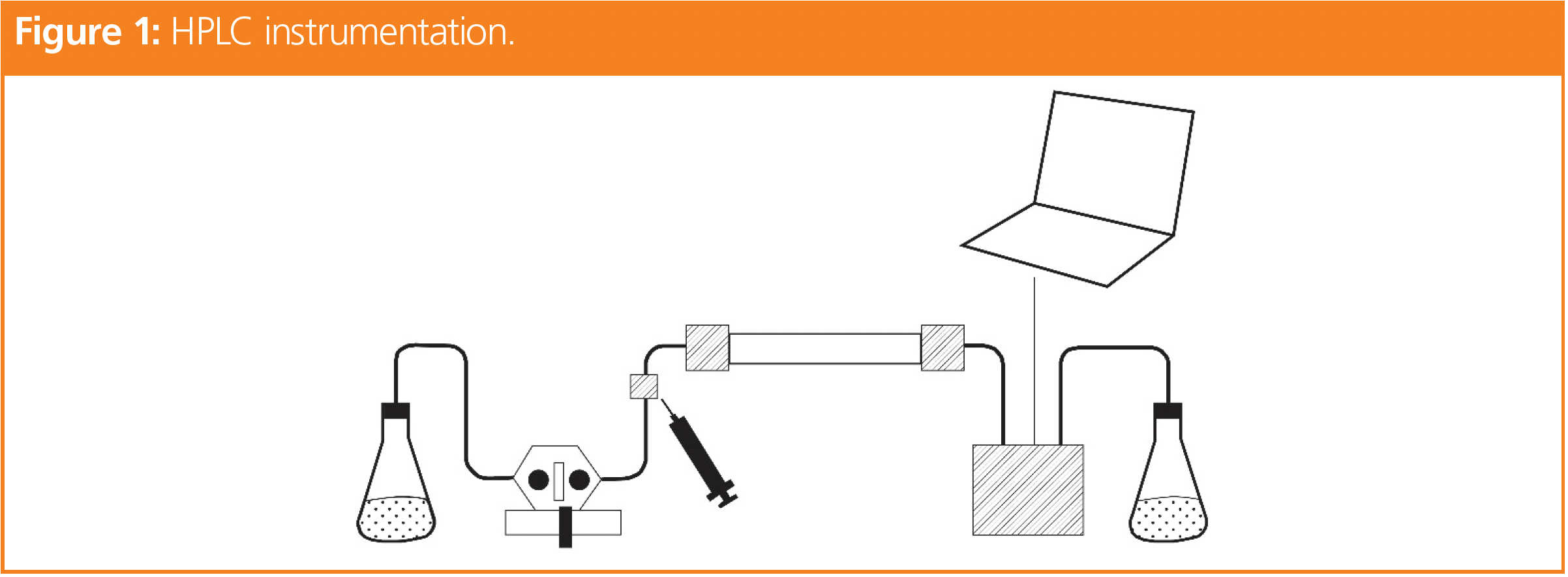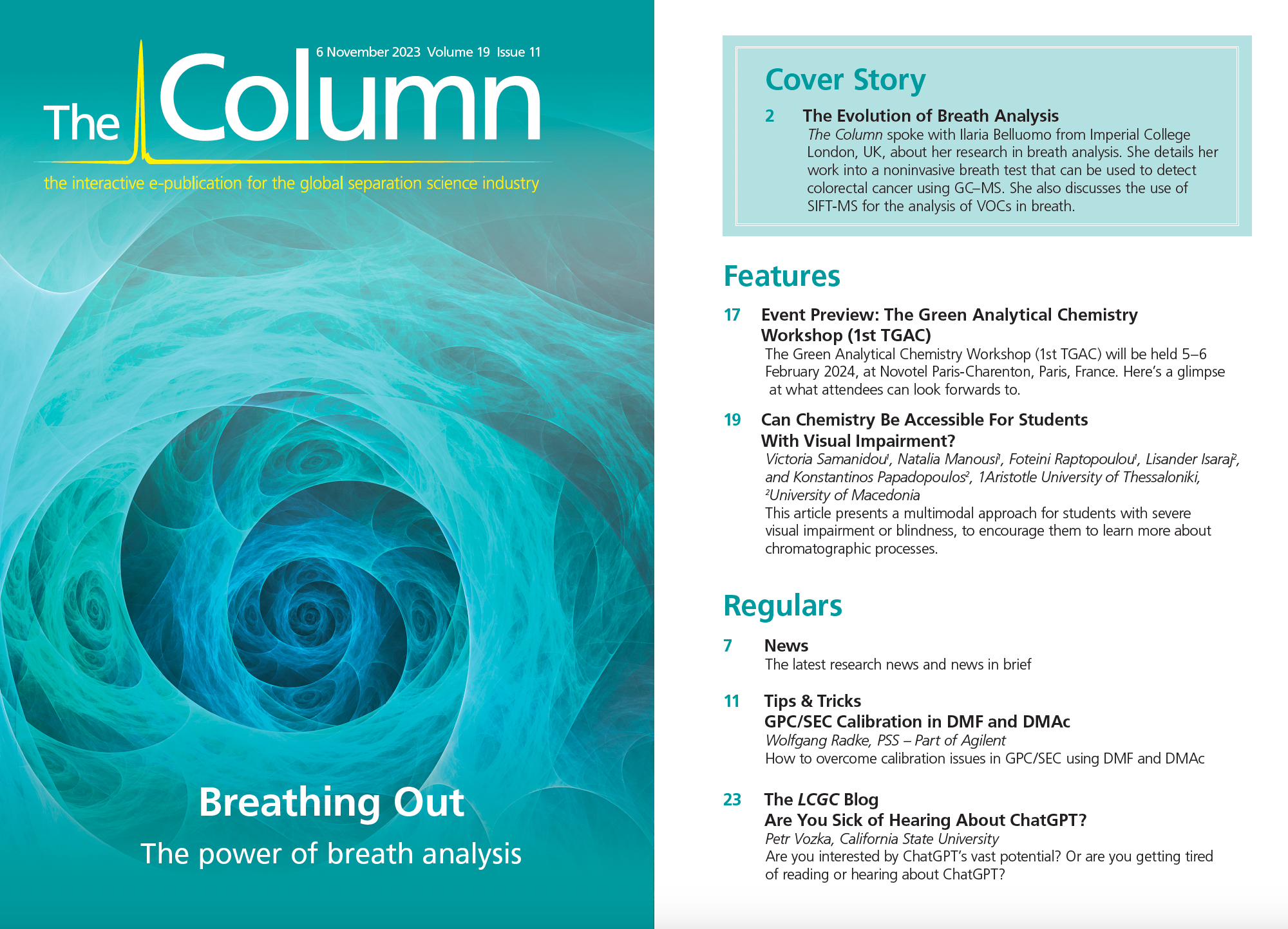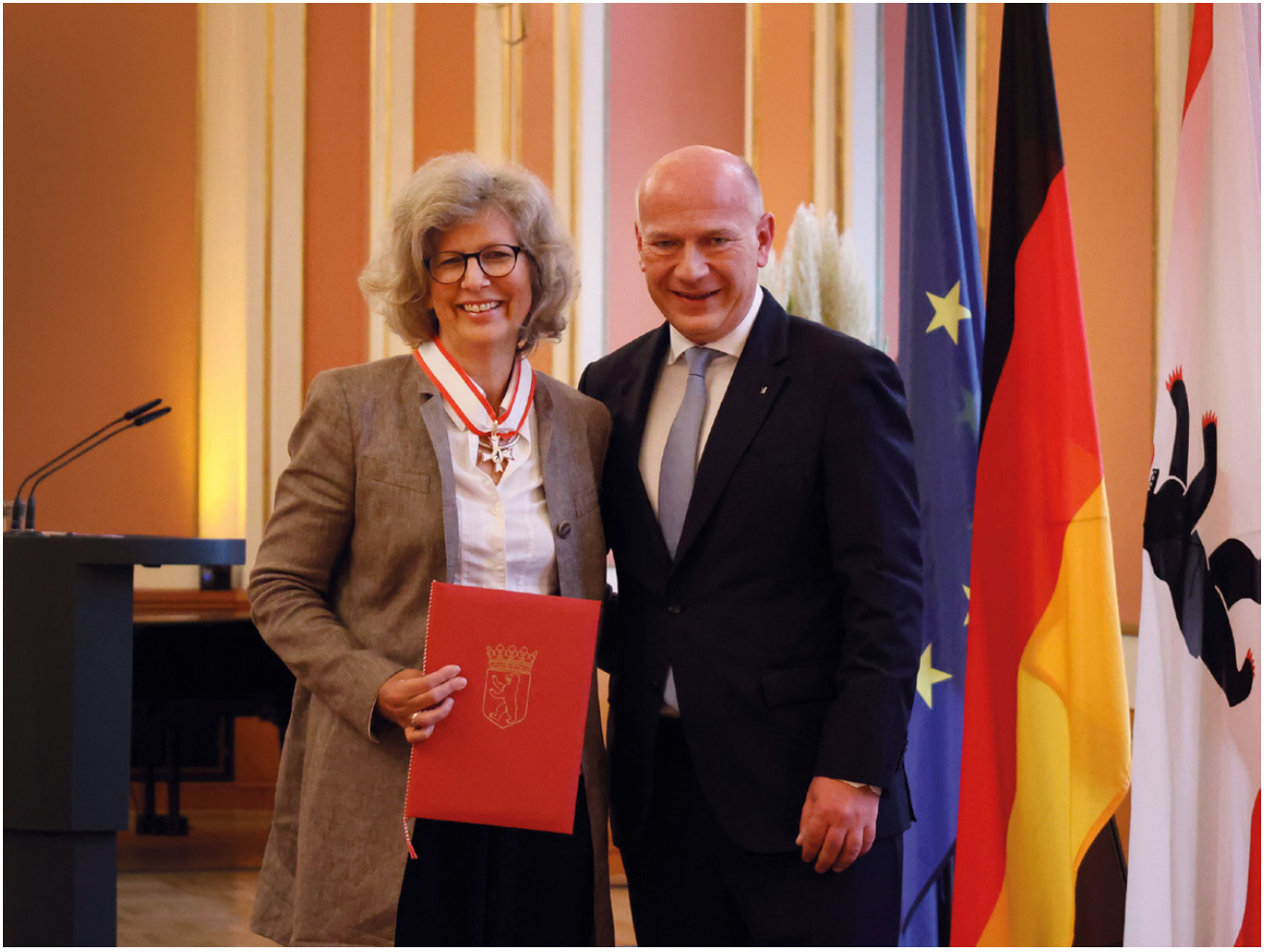Can Chemistry Be Accessible For Students With Visual Impairment?
This article presents images and diagrams related to chromatographic analysis for students with severe visual impairment or blindness, to encourage them to enrich their practical knowledge regarding laboratory processes and to make them feel familiar and comfortable with chemical and instrumental handling.
Students with visual impairments (low vision or blindness) often encounter a number of difficulties when it comes to hands-on work in a laboratory. The first obstacle is the teaching, explaining, and understanding of fundamentals. The next limiting factor is that people with visual impairments either may not be allowed to touch laboratory equipment and/or manipulate chemicals, or they may be cautious of the hazards related to laboratory work. They may therefore prefer a passive approach to learning, which is not as effective as practical work, particularly when it comes to chemistry. As a result, they might be discouraged from full participation in laboratory practice because of the belief that current approaches are inadequate and sophisticated assistive technologies are missing.
However, this is no longer the case in science. Although it sounds difficult, assistive technology can be applied to education approaches, and students with visual impairments can now pursue their dream of working in the scientific field of chemistry with passion and curiosity.
A variety of traditional methods, such as tactile images printed on microcapsule paper or thermoform, can be employed to provide students with visual impairments access to images and graphs related to chemistry. A more modern printing method uses the Tiger printer, which combines the printing of Braille labels with tactile graphics. The multimodal approach, which combines the use of tactile images and verbal descriptions for these images, can also be used to produce accessible material for the blind in addition to the above traditional methods. This innovative method has been applied by two research groups in Greece: the Laboratory of Analytical Chemistry of the School of Chemistry in the Aristotle University of Thessaloniki and the Laboratory of Accessibility and Support of Individuals with Disabilities of the Department of Educational and Social Policy in the University of Macedonia.
Six images describing chromatographic equipment that is widely used in most analytical laboratories were chosen as model applications. Chromatography is a well‑established technique used in many scientific fields (the food industries, pharmaceutical industries, toxicological laboratories, environmental pollution laboratories, and so on). Teaching scientists with visual impairments the main features of this technique is a priority to help enrich their knowledge in this field.
Six tactile pictures/diagrams were designed (using Adobe Illustrator) and printed on microcapsule paper using a tactile image maker. They include the basic components of a gas and a liquid chromatographic system, the data obtained from a chromatographic system, and the data processing of the results of a chromatographic system. Moreover, an image describing the process for the chromatographic system calibration was also created.
Tactile images are placed on the touchpad device and verbal descriptions are added with the appropriate methodology and the use of specific software. The user with blindness touches the tactile images and receives via audio a large number of verbal descriptions. This multimodal approach contributes significantly to the perception and understanding of images (including graphs and maps) by people with blindness, and has been successfully used in applications that contribute to the development of cognitive maps by people with visual impairments (1,2). Moreover, individuals with low vision can simultaneously use their residual vision to help with this.
The proposed method gives students with visual impairments access to images and diagrams related to chromatographic analysis to encourage them to enrich their practical knowledge regarding laboratory processes, and to make them feel familiar and comfortable with chemical and instrument handling.
This project is currently in the pilot‑scale phase. Research data derived from experiments conducted on students with visual impairments and their teachers are necessary to evaluate the performance and the effectiveness of such material, and to evaluate the level of audio-tactile picture perception and the entire learning process. Figures 1–6 show the images that were created. A video presentation of two images (in Greek and English language) can be found at this link.






Conclusions
It is up to teachers to find ways to inspire and help all our students, to feel that they can be included at all levels of education, and also provide equal opportunities for professional life and in society as well. Up-to-date technologies can promote teaching for students with visual impairment or blindness.
This multimodal approach combining verbal descriptions with tactile graphics has been found to be beneficial in promoting the learning of different subjects, resulting in incredible results as a novel teaching approach and contributing significantly to the perception of educational material (images, graphs, and maps) by students with visual impairments (1–4). This technology has been applied to chromatography education for chemistry students for the first time to provide a more in-depth understanding of the main theoretical background and hands-on experience of instruments. In this way, students with visual impairments can feel more confident and their scientific toolbox can be significantly enriched.
Acknowledgements
The project was funded by the Royal Society of Chemistry Inclusion and Diversity Fund (‘RSC’).
References
(1) Papadopoulos, K.; Koustriava, E.; Barouti, M. Cognitive Maps of Individuals with Blindness for Familiar and Unfamiliar Spaces: Construction Through Audio-Tactile Maps and Walked Experience. Comput. Hum. Behav. 2017, 75, 376–384. DOI: 10.1016/j.chb.2017.04.057
(2) Papadopoulos, K.; Koustriava, E.; Koukourikos, P. Orientation & Mobility Aids for Individuals with Blindness: Verbal Description vs. Audiotactile Map. Assist. Technol. 2018, 30 (4), 191–200. DOI: 10.1080/10400435.2017.1307879
(3) Maćkowski, M.; Brzoza, P. Accessible Tutoring Platform Using Audio-Tactile Graphics Adapted for Visually Impaired People. Sensors 2022, 22 (22), 8753. DOI: 10.3390/s22228753
(4) Papadopoulos, K.; Barouti, M.; Koustriava, E. Differences in Spatial Knowledge of Individuals With Blindness When Using Audiotactile Maps, Using Tactile Maps, and Walking. Except. Child. 2018, 84 (3), 330–343. DOI: 10.1177/0014402918764300
Victoria Samanidou is full professor and director of the Laboratory of Analytical Chemistry in the School of Chemistry of Aristotle University of Thessaloniki in Greece. Email: samanidu@chem.auth.gr Website: www.chem.auth.gr/en/staff/vsamanidou/
Natalia Manousi holds a Ph.D. in analytical chemistry. She currently works as a postdoctoral researcher in the laboratory of analytical chemistry at the Aristotle University of Thessaloniki.
Foteini Raptopoulou graduated from the Department of Chemistry of the Aristotle University of Thessaloniki (AUTH) in 2021 and continued as a master’s student in the postgraduate programme “Quality Control – Chemical Analysis – Environment” of the Aristotle University of Thesssaloniki in the field of bioanalysis and pharmaceutical analysis.
Konstantinos Papadopoulos is a professor in “education of individuals with visual impairments” at the Department of Educational and Social Policy of the University of Macedonia.
Lisander Isaraj is an electrical and computer engineer and holds an integrated master’s degree from Democritus University of Thrace. He is a PhD candidate at the Department of Educational and Social Policy at the University of Macedonia.

Investigating 3D-Printable Stationary Phases in Liquid Chromatography
May 7th 20253D printing technology has potential in chromatography, but a major challenge is developing materials with both high porosity and robust mechanical properties. Recently, scientists compared the separation performances of eight different 3D printable stationary phases.
Detecting Hyper-Fast Chromatographic Peaks Using Ion Mobility Spectrometry
May 6th 2025Ion mobility spectrometers can detect trace compounds quickly, though they can face various issues with detecting certain peaks. University of Hannover scientists created a new system for resolving hyper-fast gas chromatography (GC) peaks.
Altering Capillary Gas Chromatography Systems Using Silicon Pneumatic Microvalves
May 5th 2025Many multi-column gas chromatography systems use two-position multi-port switching valves, which can suffer from delays in valve switching. Shimadzu researchers aimed to create a new sampling and switching module for these systems.
Characterizing Polyamides Using Reversed-Phase Liquid Chromatography
May 5th 2025Polyamides can be difficult to characterize, despite their use in various aspects of everyday life. Vrije Universiteit Amsterdam researchers hoped to address this using a reversed-phase liquid chromatography (RPLC)-based approach.

.png&w=3840&q=75)

.png&w=3840&q=75)



.png&w=3840&q=75)



.png&w=3840&q=75)













